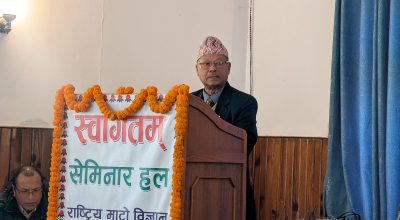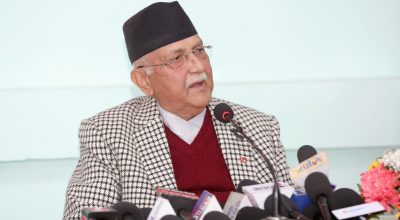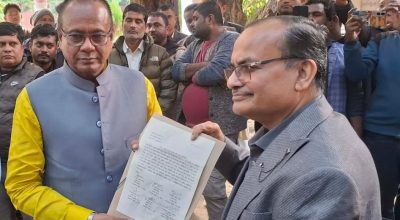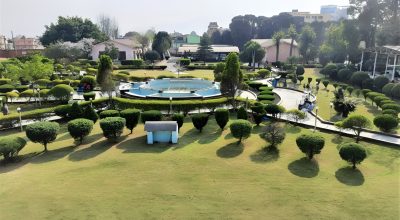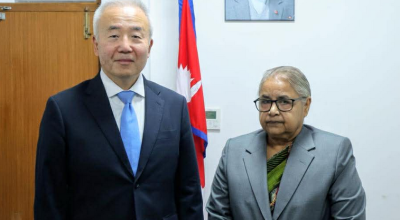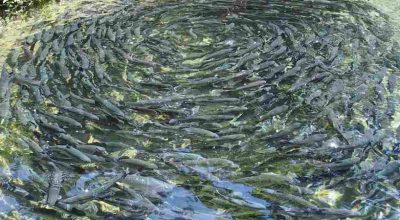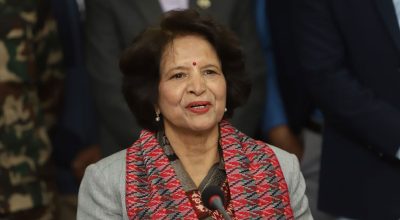
Kathmandu, Nov 8: The process for reviewing the royalty distribution ratio for all three levels of government, based on the mobilization of natural resources, has begun.
The National Natural Resources and Fiscal Commission, which has been entrusted with making recommendations to the government for royalty distribution, has initiated this review process for the first time since the implementation of fiscal federalism in Nepal.
According to the Inter-Governmental Fiscal Management Act, 2074 BS, the distribution ratio must be reviewed every five years, which is why this process has been initiated, as Commission’s Chair, Balananda Paudel said.
“We are currently gathering suggestions from the provincial and local levels as well,” he said, adding, “We will analyze and study the received suggestions and make recommendations to the government.”
According to the Act, after the commission’s recommendations, the Council of Ministers can decide and implement the revised ratio by publishing it in the Gazette. Chair Paudel said that this review process could address recent dissatisfaction and disputes over royalty distribution. “We have received various suggestions regarding the royalty ratio and its basis,” he noted, “We will analyze all the inputs to propose an appropriate ratio.”
Under the Inter-Governmental Fiscal Management Act, the royalties from natural resources are divided among the federal, provincial, and local governments in the ratio of 50%, 25%, and 25% respectively. The Act also mandates that the distribution be equitable, based on the impact of natural resource utilization on the affected provinces and localities. As per this, priority must be given to the local level from which royalties are derived due to the mobilization of natural resources. Each year, the commission also recommends the share of royalties to be allocated to the provinces and relevant local levels based on priority.
Currently, the commission recommends the royalty distribution ratios for provinces and local levels from resources such as mountaineering, electricity, forests, mines and minerals, water, and other natural resources. During the review, the commission also aims to identify additional potential sources for royalty distribution. Recently, it recommended to the government that the frequency spectrum used for telecommunications services be considered as a source for royalty distribution, though the basis for its distribution is yet to be finalized.
In the last fiscal year alone, the government collected around six billion rupees in royalties from natural resources, with more than half of that amount coming from electricity, as reported by the commission. This was followed by royalties from forests, mountaineering, and mines. Royalties from water usage have yet to be collected.
When distributing royalties from natural resource mobilization, the commission considers indicators such as the geographical location, area, population, forest coverage, and presence of resources in the respective provinces and local levels. This has sometimes led to complaints of inequality in distribution. However, Chair Paudel informed that for such issues, a separate, one-time law is being proposed as a solution. A bill related to this matter has already been tabled in Parliament.
Since royalties from natural resources are deposited into the Federal Divisible Fund and managed entirely by the federal government, there is minimal likelihood of reducing the federal share of royalties. However, the commission has indicated that there is a possibility of some adjustments to the royalty shares for the provincial and local levels. The royalties collected are transferred to the Provincial Reserve Fund for provinces and the Local Reserve Fund for local levels. #royalty #nepal





